Premium Only Content
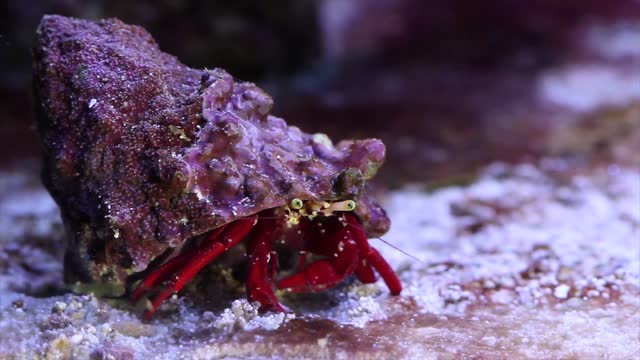
How Does Hermit Crab Changes it's Shell in the Ocean?
Today, we at Ocean Conservancy dive into the ever-changing world of hermit crabs. They are well-known for their ability to change shells, as they grow or as they find one that suits them better. There are two types of hermit crabs: land and aquatic. Land hermit crabs spend most of their lives on land and rarely submerge in the water. Aquatic hermit crabs spend most of their lives in the water and rarely leave for land.
Hermit crabs are crustaceans—a group of animals that have a hard shell (exoskeleton), ten jointed legs and a symmetrical segmented body. They have two compound eyes and two pairs of antennae (one pair for feeling and sensing vibrations and one pair for tasting and smelling). There are more than 1,000 species of hermit crabs, and most are native to tropical climates like the Caribbean, South America, Africa and Australia. Some hermit crabs can also be found living along the Atlantic coast of the United States. Hermit crabs are omnivores, animals that eat plants and meat. They forage for worms, plankton, algae, dead fish and whatever else they can find in the sand. Like most scavengers, hermit crabs play an important role by cleaning up their natural ecosystems.
Huzzah! They’re Not Really Hermits at All
When you think of the word “hermit,” you most likely picture someone who enjoys a solitary life without interactions with others, but the life or a hermit crab couldn’t be further from that description! Contrary to their name, hermit crabs live very social lives. They live in big groups, travel together and even meet up to search for food and shells. Perhaps, these animals should be renamed Huzzah Crabs!
When it’s time to upgrade shells, they work together as a team. The hermit crabs gather in a line from the biggest to the smallest crab. Then, the hermit crabs use a cascading effect to quickly transition out of their shells, give their shells to their smaller neighbors and accept a bigger shell from a larger neighbor, passing shells along until everyone is safe and secure in a new home. It’s fascinating.
But, not everything is sunshine and rainbows. Sometimes hermit crabs are known to violently steal a shell from another hermit crab.
A Shell Game
Hermit crabs are very resourceful. They have exoskeletons like other crustaceans but rely on other animals’ shells for additional support. A hermit crab without a shell is a rare sighting; they have a soft, spiraled abdomen that fits perfectly into shells. Every time the hermit crab molts (or sheds its exoskeleton to grow), it must find a new, bigger shell.
-
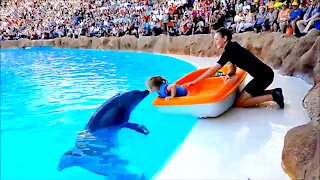 1:37
1:37
Expert Videos Magnetic Media
3 years agoDolphin kisses a little girl and brings her a gift
46044 -
 0:43
0:43
ViralHog
3 years ago $0.01 earnedOctopuses Playing on Ocean Floor
2591 -
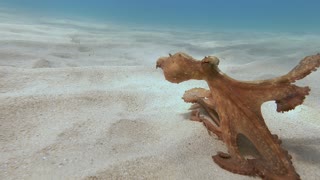 0:38
0:38
ViralHog
3 years ago $0.01 earnedAdolescent Octopus Scuttles along Ocean Floor
229 -
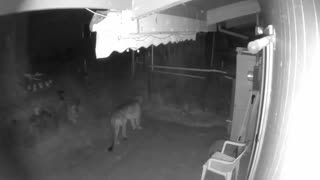 0:42
0:42
Oregon coast, camping, hiking, geocaching, exploring and more
3 years agoInjured cougar searches for food at our home
78 -
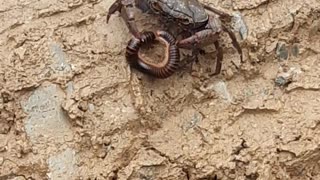 0:25
0:25
suman078
3 years agoCrab collecting its food
12 -
 LIVE
LIVE
Talk Nerdy 2 Us
3 hours agoSpecial Guest - Next UFC Superstar - Dani Aleksovska
280 watching -
 LIVE
LIVE
Man in America
5 hours agoThe Elites Are Losing Their War on Our Children w/ Robert Bortins
541 watching -
 LIVE
LIVE
I_Came_With_Fire_Podcast
8 hours agoGovt' Shutdowns, VA Scandals, MORE Drones, Syrian Strikes and staged rescues , and The DHS!
429 watching -
 56:55
56:55
The StoneZONE with Roger Stone
3 hours agoTrump Should Sue Billionaire Governor JB Pritzker for Calling Him a Rapist | The StoneZONE
11.8K1 -

Adam Does Movies
3 hours ago $0.62 earnedMore Reboots + A Good Netflix Movie + Disney Live-Action Rant - LIVE
10.3K